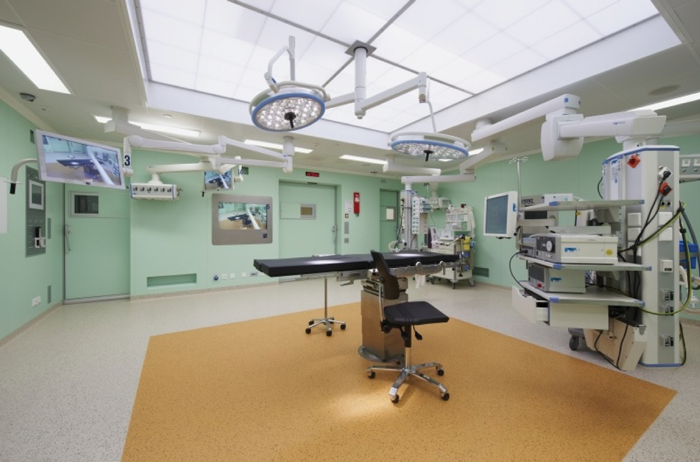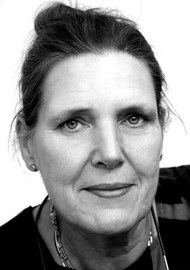Over the last few decades, rhinology has been one of the most dynamic and progressive areas of ENT. Professor Fokkens is perfectly placed to offer insight into the future possibilities that could transform our patients’ care, many of which are almost within our grasp. These exciting areas will be the focus of her opening keynote lecture at ERS2018.
We live in a time of very interesting progress in rhinology. We have not experienced such an intense period of development since the introduction of nasal corticosteroids in the 1970s. It can easily be envisioned that in a decade we will prevent/treat allergic rhinitis in a way that will have no adverse impact whatsoever on the quality of life of our patients.
We will be able to treat pregnant mothers with probiotics and/or re-engineer the microbiome in at-risk infants to prevent allergies from developing. And if we are too late for that, effective immunotherapy will not only treat the symptoms but prevent new sensitisation and the development of asthma.
Immunotherapy will also be the treatment of choice in head and neck malignancies with genetic profiling and mapping of the immune landscape of the tumour integrated into a precision approach.
“It can easily be envisioned that in a decade we will prevent/treat allergic rhinitis in a way that it will have no adverse impact whatsoever on the quality of life of our patients.”
The precision approach will also be standard in the treatment of chronic rhinosinusitis (CRS). Here, we can expect most of our patients to be treated effectively in the office with high dose local corticosteroid devices, and if that is insufficient, with monoclonal antibodies. Surgery will only be needed for very few patients. Perhaps even further in the future a simple microbiome transplant will cure CRS.

Figure 1. The integrated operating room in the Academic Medical Centre in Amsterdam.
Patients with cystic fibrosis (CF) will not suffer a life of upper and lower airway disease ending in lung transplant, but will receive effective restoration of their underlying cystic fibrosis transmembrane conductance regulator (CFTR) defect with normalisation of the homeostasis of the airway surface liquid layer through gene therapy and small molecule treatment. Granulomatosis with polyangitis (formerly Wegener’s granulomatosis) and other small- and moderate-vessel systemic vasculitis will be treated with cheap and effective biological agents with minimal side-effects.
The technical aspects of surgery will also have changed. Easy and cheap 3D navigation will be the standard of care in surgery. In patients with CRS with occlusion of ostia and limited mucosal disease, balloons will help us to open up the sinuses. With more extensive mucosal disease, high dose local corticosteroids implants will solve the problem. Instruments which are malleable and have memory will be easily steered to the proper place. In skull base surgery especially, robots will enable us to go to places we have never visited before.
If you think that much of the above sounds too good to be true, many of these things in fact already exist or are on the brink of being available. Although the evidence is not yet conclusive, recent guidelines from the World Allergy Organization recommend the use of probiotics for the primary prevention of eczema in pregnant and breastfeeding mothers of infants at high risk of developing allergies [1]. Immunotherapy for melanoma that were untreatable 10 years ago now lead to two-year survival rates in over 50% of cases [2].
New devices to install high dose local corticosteroids in the ethmoid are in development and some have already been brought to the market. The exact place of these new treatments in treatment algorithms has to be established, but we can dream of treating many of our CRSwNP patients by simply placing a drug-eluting device amongst their polyps that is as effective as systemic corticosteroids.
Treatment with monoclonal antibodies against mediators and cytokines playing a role in Th2 eosinophilic inflammation is now established in daily practice in the treatment of patients with severe asthma.
“If you think that much of this sounds too good to be true, many of these things in fact already exist or are on the brink of being available.”
In the last few years a number of randomised trials with monoclonal antibodies such as dupilumab, mepolizumab and omalizumab have been shown to be effective in patients with CRSwNP [3]. Some large phase 3 trials are ongoing, however, at the moment, we do not have registration/licencing for monoclonal antibodies for CRSwNP . The ability to predict which patients will respond favourably to a certain monoclonal antibody will be a key issue in achieving cost-effectiveness and potential registration for the indication of CRSwNP.
The first treatments containing correctors (lumacaftor) and/or potentiators (ivacaftor) of CFTR are on the market and bring significant improvement in quality of life and hope to our CF patients [4].
Finally, recent technological developments in our field are breathtaking. These range from drug-eluting stents via 3D endoscopes to new robotic systems dedicated to endoscopic paranasal sinuses and skull base surgery [5], all developed to overcome the technical challenges in our specialty.
Many of these developments focus on new medical treatments for diseases that are often treated surgically. Not all otorhinolaryngologists therefore take an optimistic approach to these changes. However, taking together the full range of developments in our field, I believe we can face our (surgical) future with confidence.
References
1. Fiocchi, A, Pawankar R, Cuello-Garcia C, et al. World Allergy Organization-McMaster University Guidelines for Allergic Disease Prevention (GLAD-P): Probiotics. World Allergy Organization Journal 2015;8(55):[Open Access] doi.org/10.1186/s40413-015-0055-2
2. Hodi FS, Kluger HM, Sznol M, et al. Durable, long-term survival in previously treated patients with advanced melanoma who received nivolumab monotherapy in a phase I trial. AACR Annual Meeting 2016; Abstract CT001. Presented April 17, 2016.
3. Bachert C, Mannent L, Naclerio RM, et al. Effect of subcutaneous dupilumab on nasal polyp burden in patients with chronic sinusitis and nasal polyposis: a randomized clinical trial. JAMA 2016;315(5):469-79.
4. Deeks ED. Lumacaftor/Ivacaftor: A Review in Cystic Fibrosis. Citation: Drugs 2016;76(12):1191-201.
5. Villaret AB, Doglietto F, Carobbio A, et al. Robotic Transnasal Endoscopic Skull Base Surgery: Systematic Review of the Literature and Report of a Novel Prototype for a Hybrid System (Brescia Endoscope Assistant Robotic Holder). World Neurosurgery 2017;105:875-83.




